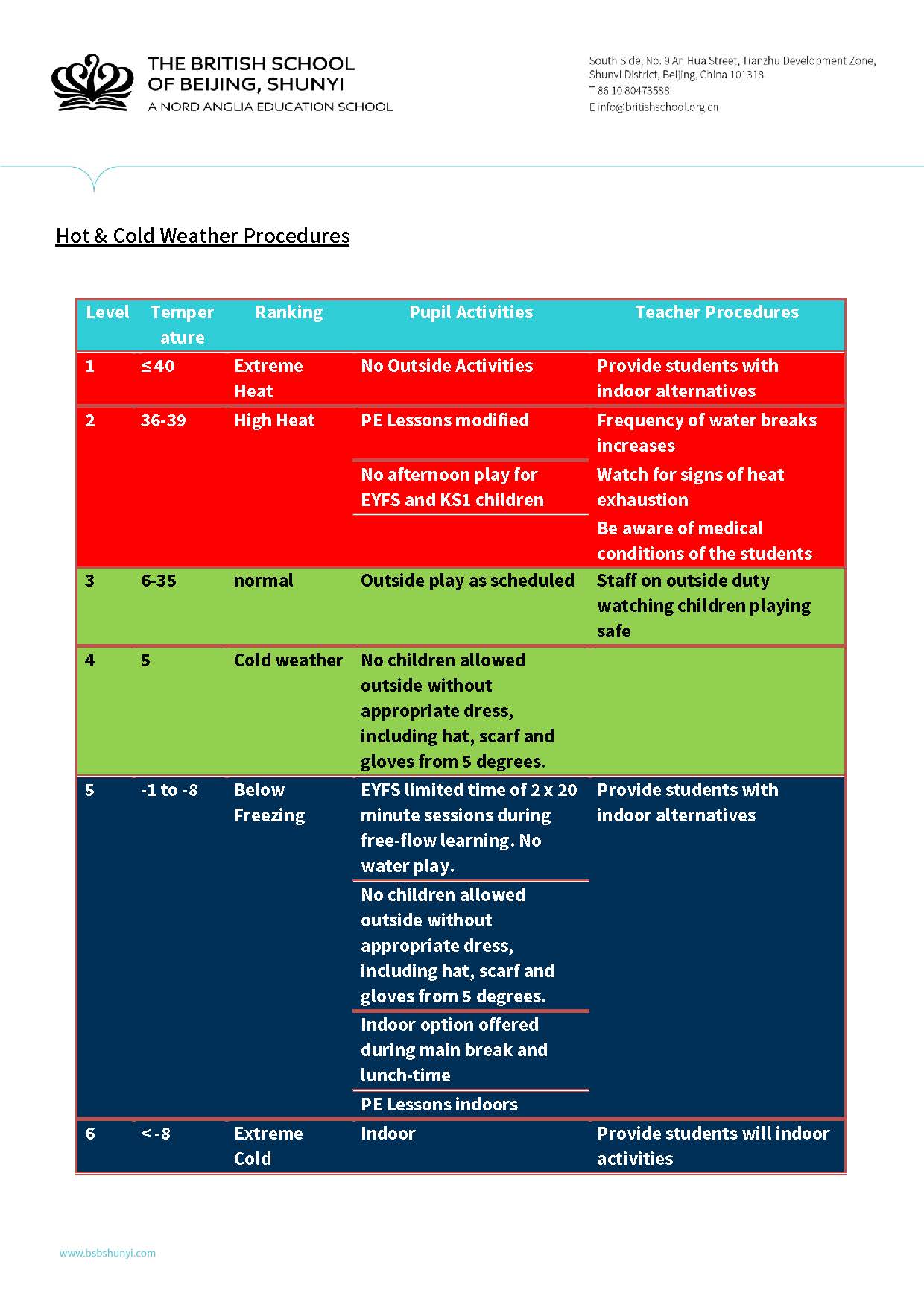INFORMATION
This policy has been drawn up in order to create guidelines in the event of extreme hot weather. Extreme hot weather is defined in this policy as temperatures over 36 degrees Celsius.
RISKS
The main risks of extreme hot weather are:
- Dehydration due to excessive perspiration and respiration.
- Overheating.
- Heat exhaustion – symptoms are nausea and vomiting, dizziness, headaches, pale skin, muscle weakness and cramps.
- Heatstroke – develops if heat exhaustion isn’t treated or can come on suddenly and is potentially fatal. Symptoms include headaches, nausea, intense thirst, sleepiness, confusion, aggression, convulsions, loss of consciousness.
ACTIONS - EVERYDAY
- Children should wear a sun hat at all times when outside. If they do not have a hat they should stay in shaded areas.
- Parents should either apply sun screen to their child before school or send in sun screen for the child to apply at school.
- Children should be encouraged to drink regularly, and time will be provided before and after breaks for children to have water. Parents should send a water bottle in to school.
- Physical and/or strenuous activity should be reduced.
- At the discretion of the teacher afternoon play may be restricted for EYFS and KS1 children when the temperature is 36 degrees Celsius or above.
- Temperature to be monitored hourly.
- If the temperature reaches 40 degrees, children are to come inside. Teddies and Nursery teachers may use their discretion and bring their children inside earlier.
- Staff should be aware of the symptoms of heat exhaustion and heat stroke. If any child demonstrates symptoms of heat exhaustion or heat stroke, they should be allowed a water break and taken in to a cool environment. If symptoms persist they should be immediately sent to the school nurse.
- Staff should also be aware of any of any medical condition in their students that may be exacerbated by excessive heat (asthma, diabetes, allergy, epilepsy etc). However, there is no reason to limit their participation, unless a known risk is obvious or the parent has advised the school that their child should not participate.
ACTIONS – PE
- If the temperature reaches above 36 degrees Celsius, all lessons will be modified due to the extreme heat. If the temperature reaches 40 degrees Celsius or above all PE lessons will be indoors in air-conditioned facilities.
- The frequency of water breaks increases with the level of temperature but any student who shows signs of heat exhaustion or overheating should be allowed a water break or an opportunity to come into an air-conditioned environment. It is imperative that if a student communicates to a PE teacher about symptoms of a heat related context they should limit and or stop all physical activity and go to a cool place and immediately drink some water. If these symptoms persist, these students must be immediately taken to the nurse for further observation and treatment.
- All PE Teachers should be aware of medical conditions of the students they teach, such as asthma, diabetes, epilepsy (seizure), allergy, medications, etc. which puts students at a high risk of heat illness. These conditions could be intensified if exercising in hot weather; however, there is no reason to limit students’ participation, unless a known risk is obvious or the parent has advised the school that their child should not participate.


